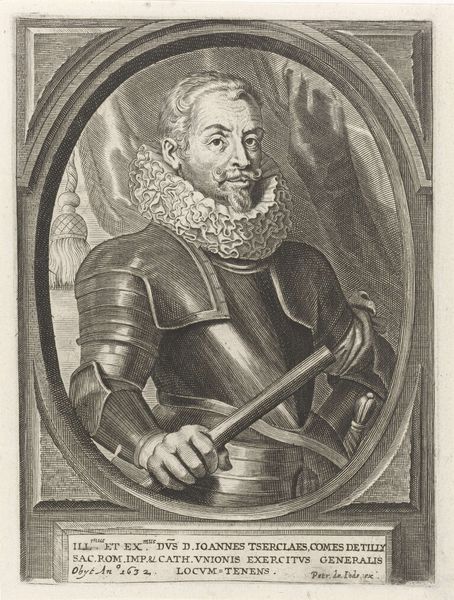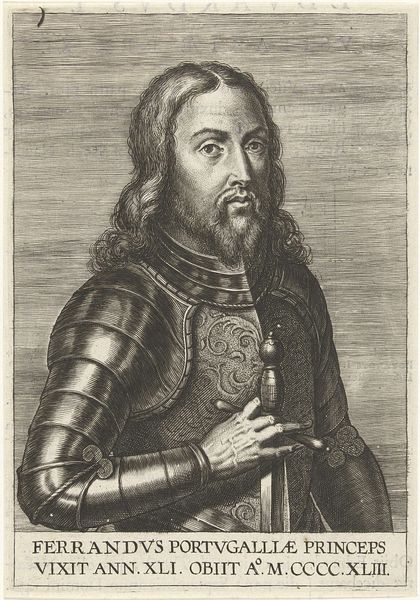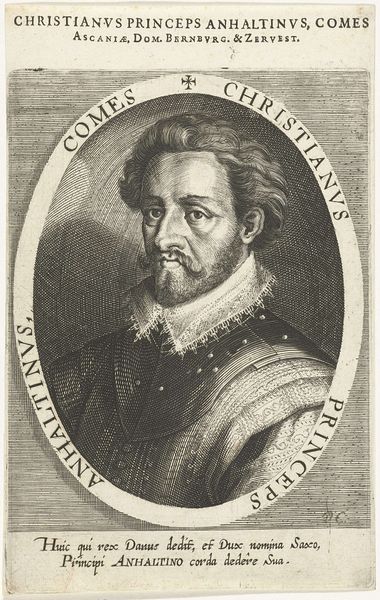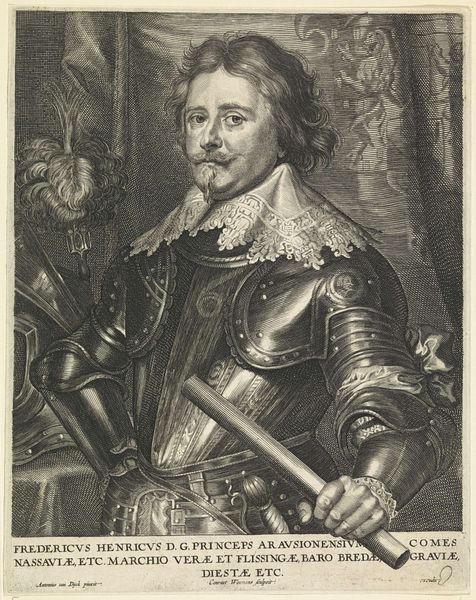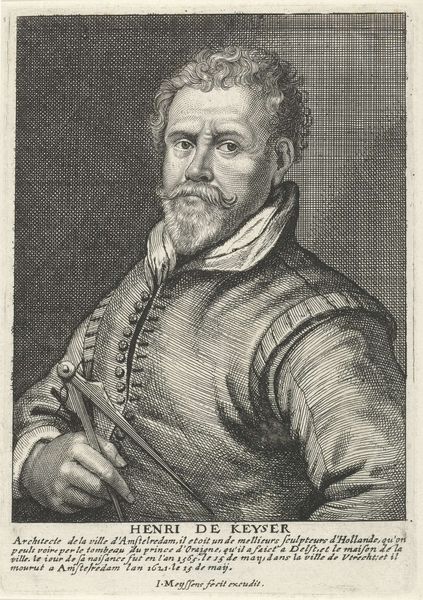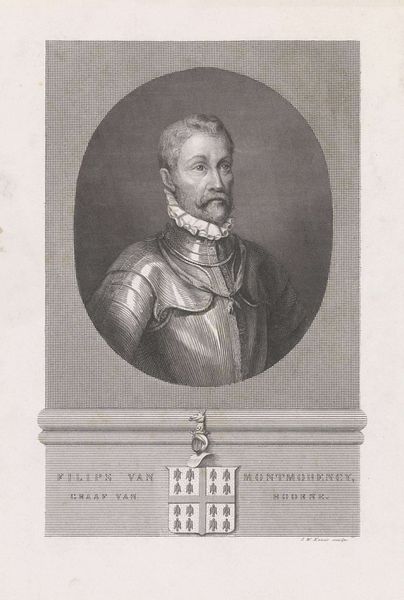
engraving
#
portrait
#
baroque
#
charcoal drawing
#
engraving
Dimensions: height 147 mm, width 98 mm
Copyright: Rijks Museum: Open Domain
Curator: Welcome. Let’s focus on a striking engraving entitled "Portret van Paul Pfinzing". Experts date its creation sometime between 1643 and 1680. It presents a shoulder-up view of a distinguished gentleman. Editor: The figure appears weighted down by the very heavy armor he sports! His downward gaze seems… burdened. Are we to believe this armor conveys strength or oppression? Curator: This engraving is significant as it captures the likeness of Paul Pfinzing, a prominent figure during his time. Portraits like this served to immortalize individuals and project their status and affiliations. Note how the engraving includes descriptive text to solidify the sitter's achievements and societal standing. Editor: I do wonder how accurate these portrayals are. Isn't it also serving the needs of the ruling class and powerful elites by preserving their perceived status quo and legitimizing their authority? Curator: In terms of artistry, observe the engraver’s adept handling of line and tone. They give weight and depth to Paul Pfinzing’s armor. Consider also how strategic lighting can subtly convey character and emphasize key elements of the sitter's personality, like the chain and medallion that adorn his breastplate. Editor: Yes, and I think the artist here has leaned into that somewhat. The contrast definitely brings your eye to the wealth and stature conferred upon this man, not the labor it takes to uphold that social strata. Are we also reinforcing notions of inequality with art? Curator: Well, in that period, such portraits were often commissioned by those of a certain class. The image was very important, and it reinforced societal norms. Now it might seem oppressive or excessive. The artist’s engraving style is aligned with the Baroque aesthetic—its grandeur and realism appealed to a sophisticated clientele. The use of engraving ensured replicability. Prints made these images more widely accessible and contributed to Pfinzing’s lasting legacy, albeit one available primarily to literate circles able to read and interpret. Editor: Food for thought, definitely! So it’s also a reflection on who has access to these images and interpretations! Curator: Precisely. Ultimately, I find this piece a rich representation of not only Paul Pfinzing, but the world of societal hierarchies and the machinery involved in solidifying class stature and recognition. Editor: It does underscore how art exists at a fascinating intersection—simultaneously memorializing individuals and reflecting the era’s social frameworks of inequality that often still prevail today.
Comments
No comments
Be the first to comment and join the conversation on the ultimate creative platform.


